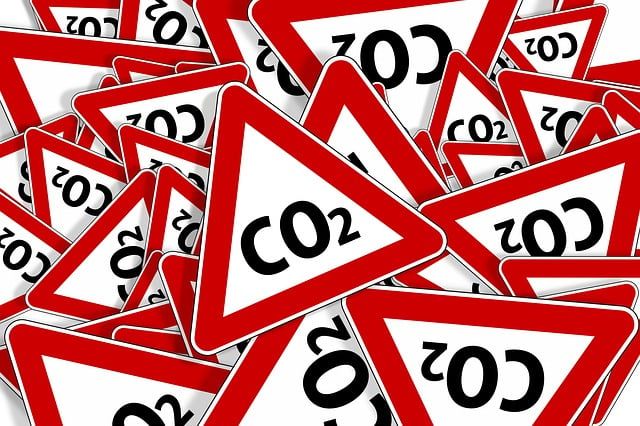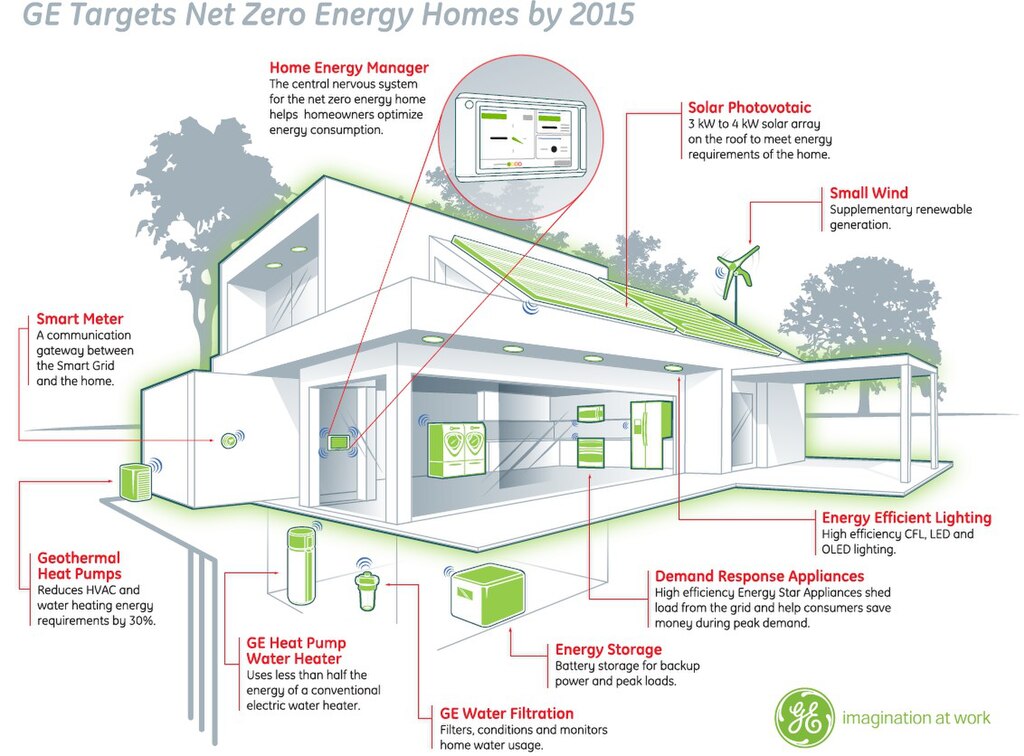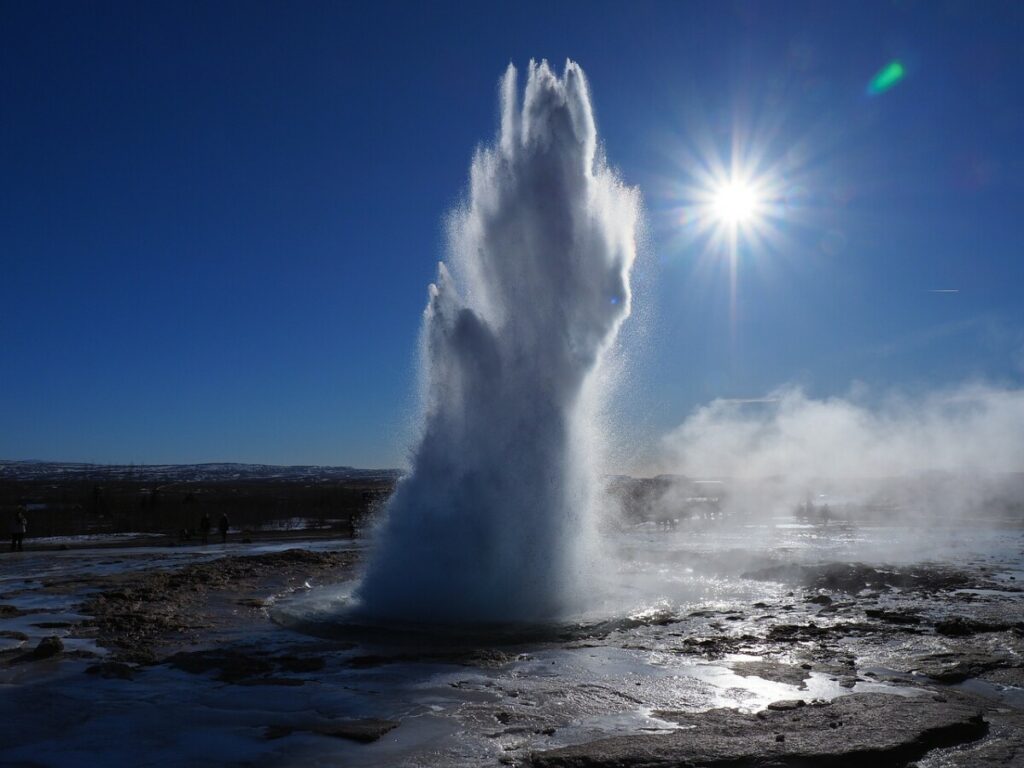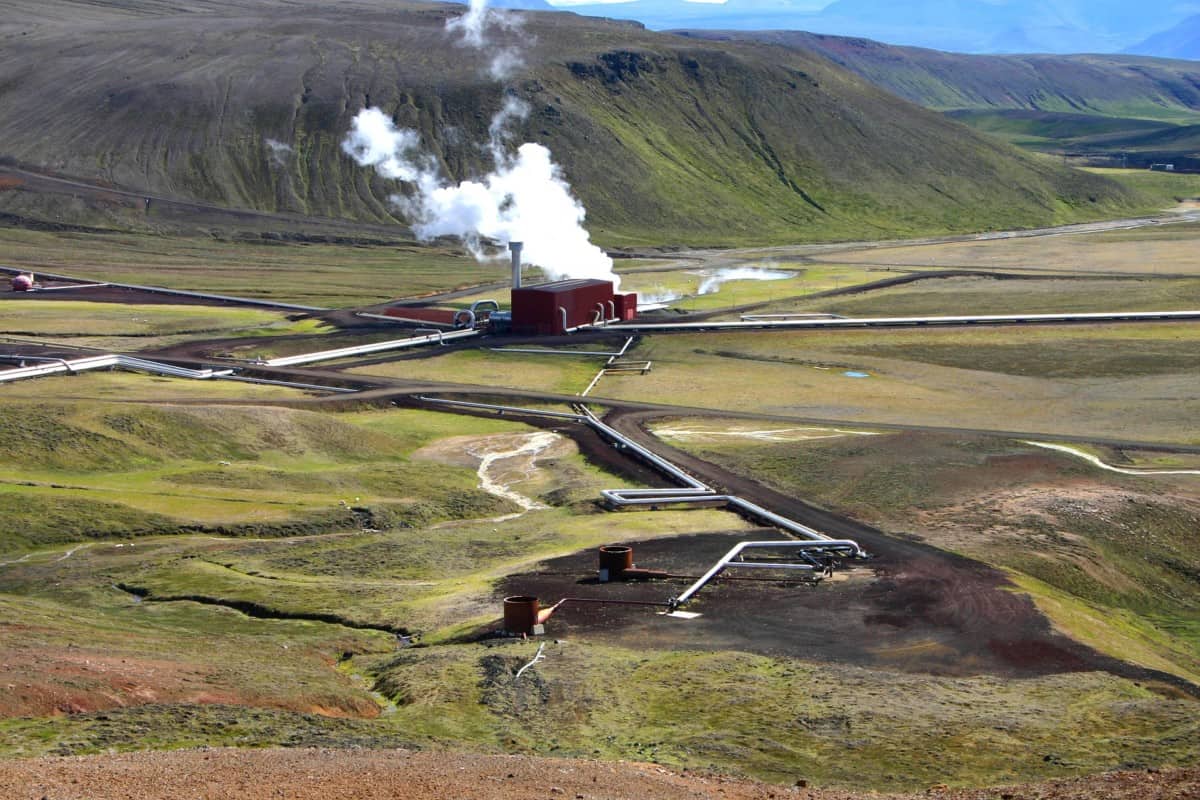How does Geothermal Energy Work?
Geothermal energy, a renewable energy source derived from the Earth’s heat, has garnered significant interest due to its potential to provide sustainable power. How does geothermal energy work? This question is essential for understanding how we can harness this natural resource for electricity generation, heating, and cooling applications.
Geothermal energy work relies on the Earth’s internal heat, which has been utilized by humans for centuries. This article delves into the workings of geothermal energy, exploring its mechanisms, applications, and benefits.
Understanding Geothermal Energy
What is Geothermal Energy?
Geothermal energy originates from the heat stored beneath the Earth’s surface. This heat is produced by the decay of radioactive materials in the Earth’s core and the residual heat from the planet’s formation.
Consequently, the Earth’s interior remains extremely hot, creating a geothermal gradient that increases temperature with depth.
How Does Geothermal Energy Work?
Geothermal energy work is based on accessing and utilizing this subterranean heat. There are various methods to harness geothermal energy, including geothermal power plants, geothermal heat pumps, and direct use applications.
Each method utilizes different geothermal resources to produce heat energy and electricity.
Types of Geothermal Power Plants
- Dry Steam Power Plants
- Dry steam plants are the oldest type of geothermal power plant.
- They directly use geothermal steam from underground reservoirs to turn turbines and generate electricity.
- Flash Steam Power Plants
- Flash steam power plants use high-pressure hot water from geothermal reservoirs.
- When the hot water is depressurized, or “flashed,” it turns into steam, which drives the turbines.
- Binary Cycle Power Plants
- Binary cycle power plants are the most common type of geothermal power plant.
- They use geothermal water to heat a secondary fluid with a lower boiling point, which then vaporizes and drives the turbines.
Geothermal Heat Pumps
Geothermal heat pumps are systems designed for heating and cooling buildings. They utilize the constant temperature of the Earth’s surface to transfer heat.
These systems consist of a heat exchanger and a series of pipes buried underground, forming a closed-loop system. In the winter, the heat pump extracts heat from the ground and transfers it indoors.
In the summer, the process is reversed, and the heat pump expels heat from the building into the ground.
Direct Use Applications
Direct use applications involve using geothermal water directly for heating purposes without converting it to electricity. These applications include district heating systems, greenhouses, aquaculture ponds, and industrial processes.
The ancient Romans and Native American cultures have utilized geothermal sources for bathing and heating, a testament to the longevity and reliability of this energy source.
Benefits of Geothermal Energy

Renewable and Sustainable
Geothermal energy is a renewable resource, constantly replenished by the Earth’s internal heat. It provides a sustainable future for energy production, reducing our reliance on fossil fuels like coal, oil, and natural gas.
Environmental Impact
Geothermal energy production has a lower environmental impact compared to traditional fossil fuels. Geothermal plants emit minimal greenhouse gases, with significantly lower emissions of carbon dioxide and hydrogen sulfide.
This makes geothermal energy a cleaner alternative, contributing to the reduction of global warming and air pollution.
Cost-Effective
Although the initial setup costs for geothermal systems can be high, the long-term savings on energy costs make them economically viable.
Geothermal heat pumps are among the most energy-efficient heating and cooling systems available, leading to reduced energy bills for homeowners and businesses.
Reliability and Stability
Geothermal energy is not dependent on weather conditions or air temperatures, making it a reliable source of power.
Unlike solar and wind energy, which are subject to fluctuations, geothermal power plants can operate continuously, providing a stable and consistent energy supply.
How Geothermal Energy Works: In-Depth Explanation
Geothermal Resources and Reservoirs
Geothermal resources are found in various locations around the world, often near tectonic plate boundaries where volcanic activity is prevalent.
The most well-known geothermal regions include the Pacific Ocean’s “Ring of Fire,” Yellowstone National Park in the United States, and New Zealand.
These areas have underground reservoirs of hot water and steam, which are key to geothermal energy work.
Geothermal reservoirs consist of permeable rock saturated with water and heat. High pressure and heat energy from the Earth’s core cause the water to remain in a liquid state despite high temperatures.
Drilling wells into these reservoirs allows access to the heated water and steam, which can be used for electricity generation and direct heating applications.
Components of Geothermal Systems
- Production Wells
- These wells are drilled into geothermal reservoirs to extract hot water and steam.
- The depth of these wells can vary, depending on the geothermal gradient and the location of the reservoir.
- Injection Wells
- After the heat energy is extracted from the geothermal fluid, the cooled water is re-injected into the Earth through injection wells.
- This process helps sustain the geothermal reservoir by maintaining pressure and water levels.
- Heat Exchanger
- The heat exchanger transfers heat from the geothermal fluid to a secondary fluid in binary cycle power plants.
- This process maximizes efficiency by using fluids with lower boiling points.
Electricity Generation with Geothermal Power Plants
Geothermal power plants generate electricity by converting geothermal energy into mechanical energy and then into electrical energy. Here’s a detailed look at how each type of geothermal power plant works:
Dry Steam Power Plants
- Dry steam power plants directly use steam from geothermal reservoirs to turn turbines.
- The steam drives the turbine, which is connected to a generator, producing electricity.
- These plants are located in areas with abundant natural steam sources, such as The Geysers in Northern California.
Flash Steam Power Plants
- Flash steam power plants are the most common type of geothermal power plants.
- High-pressure hot water from geothermal reservoirs is brought to the surface.
- As the pressure decreases, the hot water “flashes” into steam, which drives the turbines to generate electricity.
- The remaining water and steam are re-injected into the reservoir to sustain the system.
Binary Cycle Power Plants
- Binary cycle power plants are suitable for lower temperature geothermal resources.
- They use geothermal water to heat an organic compound with a lower boiling point.
- The organic compound vaporizes and drives the turbines, producing electricity.
- This method allows for the use of geothermal energy in areas with less intense geothermal activity.
Applications of Geothermal Energy

Image Source: Wikimedia Commons
Geothermal Heating and Cooling Systems
Geothermal heating and cooling systems, often referred to as geothermal heat pumps, utilize the Earth’s stable temperatures to regulate building temperatures.
These systems are efficient and environmentally friendly, providing significant savings on energy costs. Here’s how they work:
- Heating Mode: In winter, the heat pump extracts heat from the ground and transfers it to the building.
- Cooling Mode: In summer, the process is reversed, and heat from the building is expelled into the ground.
Direct Use Applications
Geothermal energy can be used directly for various purposes without being converted to electricity. Some common direct use applications include:
- District Heating Systems: Geothermal water is used to heat multiple buildings through a network of pipes.
- Greenhouses and Aquaculture: Geothermal heat promotes plant growth and maintains optimal water temperatures for fish farming.
- Industrial Processes: Geothermal energy can be used in various industrial applications, such as drying crops and pasteurizing milk.
Cooling Applications
Geothermal systems can also be used for cooling buildings. By taking advantage of the Earth’s constant temperature, these systems provide efficient cooling, reducing reliance on traditional air conditioners.
This method is particularly beneficial in areas with high air temperatures, offering a sustainable cooling solution.
How does Geothermal Energy Work: Frequently Asked Questions
How does geothermal energy work?
Geothermal energy works by tapping into the Earth’s internal heat, which is used to generate electricity or provide direct heating. This is achieved through various systems and technologies, such as geothermal power plants and heat pumps.
What are the benefits of geothermal energy?
Geothermal energy is a renewable, sustainable resource that provides reliable power and heating with minimal environmental impact. It reduces greenhouse gas emissions and can lead to significant cost savings on energy bills.
Where can geothermal energy be found?
Geothermal energy is found in regions with high geothermal activity, such as near tectonic plate boundaries, volcanic areas, and hot springs. Notable locations include the Ring of Fire, Yellowstone National Park, and New Zealand.
What are geothermal heat pumps?
Geothermal heat pumps are systems that use the Earth’s stable temperatures to heat and cool buildings. They consist of a heat exchanger and underground pipes, forming a closed-loop system that transfers heat to and from the ground.
How do geothermal power plants generate electricity?
Geothermal power plants generate electricity by using steam or hot water from geothermal reservoirs to turn turbines. The turbines are connected to generators that produce electricity. There are different types of geothermal power plants, including dry steam, flash steam, and binary cycle plants.
How Does Geothermal Energy Work in Power Production?

Tapping into the Earth’s Heat
Geothermal power production involves tapping into the Earth’s internal heat stored in hot rocks and underground reservoirs.
This heat is accessed by drilling wells into the Earth’s crust to reach geothermal reservoirs, where water and steam are trapped under high pressure. The process of harnessing this energy is highly efficient and sustainable.
- Drilling Wells
- Production wells are drilled into geothermal reservoirs to extract hot water and steam.
- These wells can reach depths of several kilometers, depending on the location and geothermal gradient.
- Heat Extraction
- The extracted geothermal fluid (water or steam) is brought to the surface through production wells.
- This fluid is then used to produce electricity or for direct heating applications.
- Power Generation
- In geothermal power plants, the geothermal fluid is used to turn turbines connected to electricity generators.
- The three main types of geothermal power plants (dry steam, flash steam, and binary cycle) each have unique methods for converting geothermal energy into electrical power.
How does Geothermal Energy Work?
Environmental Impact and Sustainability
Geothermal energy is considered one of the most environmentally friendly renewable energy sources. Its impact on the environment is minimal compared to fossil fuels, and it offers several advantages in terms of sustainability and efficiency.
Reduced Greenhouse Gas Emissions
- Geothermal power plants emit significantly lower amounts of greenhouse gases compared to traditional fossil fuel plants.
- Carbon dioxide emissions are minimal, and hydrogen sulfide, a naturally occurring gas in geothermal reservoirs, is usually captured and converted to a non-toxic form.
Minimal Land and Water Use
- Geothermal plants occupy less land compared to other power plants, such as solar or wind farms.
- Water used in geothermal systems is often recycled back into the Earth, maintaining the reservoir’s sustainability and reducing water consumption.
Renewable and Reliable
- Geothermal energy is a renewable resource, continuously replenished by the Earth’s internal heat.
- Unlike solar and wind energy, geothermal power is not dependent on weather conditions, making it a reliable and consistent energy source.
How does Geothermal Energy Work?

Geothermal Energy Applications Around the World
The United States
- The United States is a leader in geothermal energy production, with significant geothermal resources located primarily in the western states.
- California, in particular, hosts the largest geothermal field in the world, The Geysers, which has been in operation since the 1960s.
New Zealand
- New Zealand is renowned for its geothermal activity, with numerous geothermal power plants and direct use applications.
- The country’s geothermal resources are used for electricity generation, heating, and even tourist attractions, such as hot springs.
Iceland
- Iceland is a pioneer in geothermal energy utilization, with a significant portion of its energy needs met by geothermal power.
- The country’s unique geological location on the Mid-Atlantic Ridge provides abundant geothermal resources, used for both electricity generation and district heating systems.
Challenges and Future Prospects
Despite its numerous benefits, geothermal energy also faces some challenges. These include high initial costs for drilling and plant construction, limited suitable locations, and the need for advanced technology to access deeper and hotter geothermal resources.
Technological Advancements
- Continued research and development are essential to improve drilling techniques and enhance the efficiency of geothermal systems.
- Advances in geothermal technology, such as enhanced geothermal systems (EGS), have the potential to expand the use of geothermal energy by accessing deeper and less accessible resources.
Government Support and Incentives
- Government policies and incentives play a crucial role in promoting geothermal energy development.
- Tax credits, grants, and subsidies can help offset the high upfront costs and encourage investment in geothermal projects.
How does Geothermal Energy Work Conclusion
Geothermal energy offers a sustainable, reliable, and environmentally friendly solution to the world’s growing energy needs.
By understanding how geothermal energy works, its applications, and benefits, we can better appreciate its potential to contribute to a greener and more sustainable future.
With continued advancements and supportive policies, geothermal energy is poised to play a significant role in the global transition to renewable energy sources.
How does Geothermal Energy Work: Frequently Asked Questions
How does geothermal energy work in heating and cooling systems?
Geothermal heating and cooling systems use the Earth’s constant temperature to regulate building temperatures. These systems consist of a heat exchanger and underground pipes, forming a closed-loop system that transfers heat between the building and the ground.
Can geothermal energy be used for cooling applications?
Yes, geothermal systems can be used for cooling buildings. They take advantage of the Earth’s stable temperatures to provide efficient cooling, reducing reliance on traditional air conditioners and lowering energy costs.
What are the environmental benefits of geothermal energy?
Geothermal energy has minimal environmental impact, with significantly lower greenhouse gas emissions compared to fossil fuels. It also uses less land and water, making it an environmentally friendly renewable energy source.
Finally, I hope that you have found How does Geothermal Energy Work insightful? If so please consider sharing this article with friends or on social media so that others may find answers to their questions. Thank you!
Recent Posts
The Future of Wind Energy The future of wind energy is set to play a critical role in addressing global energy needs while combating climate change. As renewable energy sources like wind and...
Misconceptions about Wind Energy This article Misconceptions about wind energy will debunk common myths surrounding wind energy and clarify the facts based on scientific research, studies, and...



